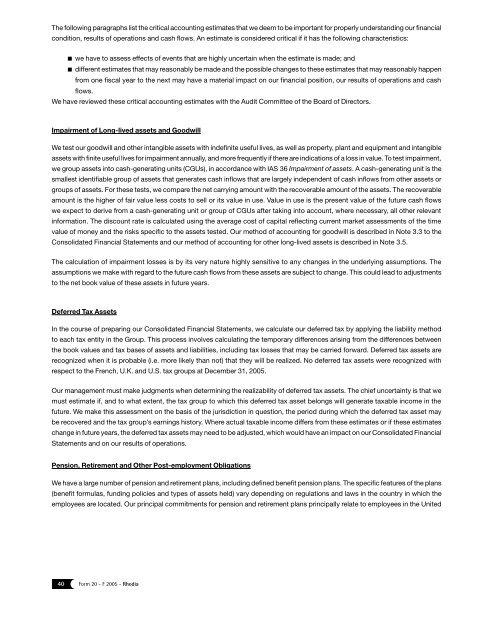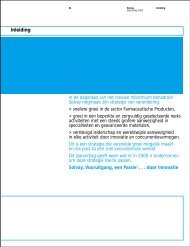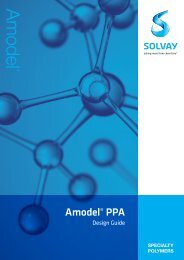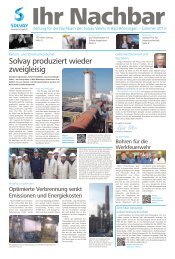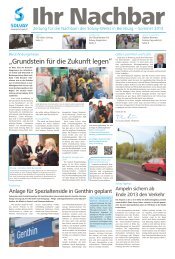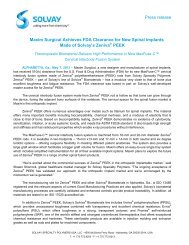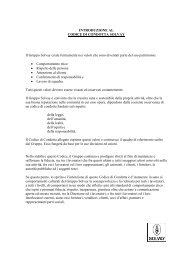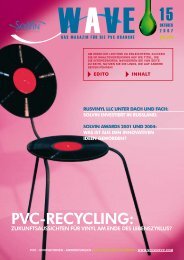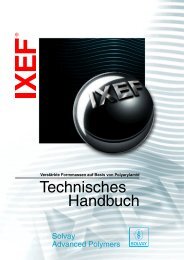Form 20-F 2005
Form 20-F 2005
Form 20-F 2005
Create successful ePaper yourself
Turn your PDF publications into a flip-book with our unique Google optimized e-Paper software.
The following paragraphs list the critical accounting estimates that we deem to be important for properly understanding our financial<br />
condition, results of operations and cash flows. An estimate is considered critical if it has the following characteristics:<br />
we have to assess effects of events that are highly uncertain when the estimate is made; and<br />
different estimates that may reasonably be made and the possible changes to these estimates that may reasonably happen<br />
from one fiscal year to the next may have a material impact on our financial position, our results of operations and cash<br />
flows.<br />
We have reviewed these critical accounting estimates with the Audit Committee of the Board of Directors.<br />
Impairment of Long-lived assets and Goodwill<br />
We test our goodwill and other intangible assets with indefinite useful lives, as well as property, plant and equipment and intangible<br />
assets with finite useful lives for impairment annually, and more frequently if there are indications of a loss in value. To test impairment,<br />
we group assets into cash-generating units (CGUs), in accordance with IAS 36 Impairment of assets. A cash-generating unit is the<br />
smallest identifiable group of assets that generates cash inflows that are largely independent of cash inflows from other assets or<br />
groups of assets. For these tests, we compare the net carrying amount with the recoverable amount of the assets. The recoverable<br />
amount is the higher of fair value less costs to sell or its value in use. Value in use is the present value of the future cash flows<br />
we expect to derive from a cash-generating unit or group of CGUs after taking into account, where necessary, all other relevant<br />
information. The discount rate is calculated using the average cost of capital reflecting current market assessments of the time<br />
value of money and the risks specific to the assets tested. Our method of accounting for goodwill is described in Note 3.3 to the<br />
Consolidated Financial Statements and our method of accounting for other long-lived assets is described in Note 3.5.<br />
The calculation of impairment losses is by its very nature highly sensitive to any changes in the underlying assumptions. The<br />
assumptions we make with regard to the future cash flows from these assets are subject to change. This could lead to adjustments<br />
to the net book value of these assets in future years.<br />
Deferred Tax Assets<br />
In the course of preparing our Consolidated Financial Statements, we calculate our deferred tax by applying the liability method<br />
to each tax entity in the Group. This process involves calculating the temporary differences arising from the differences between<br />
the book values and tax bases of assets and liabilities, including tax losses that may be carried forward. Deferred tax assets are<br />
recognized when it is probable (i.e. more likely than not) that they will be realized. No deferred tax assets were recognized with<br />
respect to the French, U.K. and U.S. tax groups at December 31, <strong>20</strong>05.<br />
Our management must make judgments when determining the realizability of deferred tax assets. The chief uncertainty is that we<br />
must estimate if, and to what extent, the tax group to which this deferred tax asset belongs will generate taxable income in the<br />
future. We make this assessment on the basis of the jurisdiction in question, the period during which the deferred tax asset may<br />
be recovered and the tax group’s earnings history. Where actual taxable income differs from these estimates or if these estimates<br />
change in future years, the deferred tax assets may need to be adjusted, which would have an impact on our Consolidated Financial<br />
Statements and on our results of operations.<br />
Pension, Retirement and Other Post-employment Obligations<br />
We have a large number of pension and retirement plans, including defined benefit pension plans. The specific features of the plans<br />
(benefit formulas, funding policies and types of assets held) vary depending on regulations and laws in the country in which the<br />
employees are located. Our principal commitments for pension and retirement plans principally relate to employees in the United<br />
40 <strong>Form</strong> <strong>20</strong> - F <strong>20</strong>05 - Rhodia


